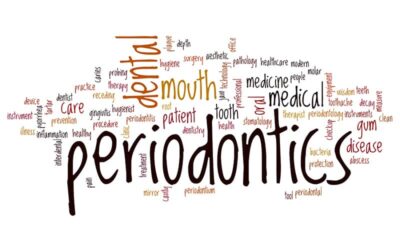Dental insurance can be complex. Most practitioners rely on dental insurance verification services to obtain patient eligibility and benefits information from carriers. This helps dental practices understand patients’ coverage, bill for services, and get paid quickly. Done with great attention to detail, insurance verification takes place at the time of scheduling to check the patient’s eligibility, coverage/benefits, policy limitations, and financial responsibility. One of the most confusing aspects of dental insurance is dual coverage – when a patient’s treatment is covered by primary and secondary dental health insurance or more than one dental benefit plan.
What Dual Coverage Means
Generally, the primary plan is the plan that the patient enrols, and the secondary plan is the one that covers them as a dependent, according to Delta Dental. Once the primary plan has paid what expenses it should pay as determined by the coordination of benefits provision, the secondary plan can be used (www.thebalance.com). Let’s see what dual dental overage means:
- For adults, the primary plan is the one in which the person is enrolled through his or her employment. A spouse or domestic partner’s plan is secondary.
- If an individual has a plan through current employment as well as a retiree plan, the plan that is through current employment is primary.
- For dependent children, primary coverage is based on which parent’s birthday falls earlier in the year. In the event of a divorce or remarriage, court orders will state which parent has primary responsibility.
The dentist’s office must determine which plan is primary. As the determination of dual coverage for dental procedures depends on specific plan provisions, a dental insurance verification specialist will check the patient’s Evidence of Coverage for details.
Coordination of Benefits – How Insurance Pays

The process called coordination of benefits comes into play when the two plans work together to pay a patient’s dental claim. The advantage of having dual coverage is that it fills gaps in coverage that can occur when the individual’s primary policy’s annual spending limit is reached, or when a plan does not provide coverage for necessary or desired dental treatments (www.dentalbilling.com). Dual insurance helps people maximize their benefits.
When a patient has dual coverage, plans will coordinate the benefits to avoid over-insurance or duplication of benefits. Subject to federal and state laws, Coordination of Benefits (COB) has a specific sequence in which payers reimburse claims for patients who have dual insurance coverage. Claims are first sent to the payer that offers the plan designated as primary. That plan should pay its normal benefits, regardless of any other insurance plan or additional coverage. If the primary payer does not pay the claim in full, the claim is then sent to the secondary payer(s) for consideration of the remaining balance for payment (www.pediatricdentistrytoday.org). There are several COB policies that determine how the patient’s coverage is met:
- Traditional: Traditional COB policy allows the beneficiary to receive up to 100 percent of dental treatment expenses from a combination of the primary and secondary plans.
- Non-duplication COB: In this case, if the primary plan paid the same or more than what the secondary plan would have paid if it had been primary, then the secondary plan is not responsible for any payment at all. If the primary plan pays less than the secondary carrier allows, then secondary plan will pay the difference between the primary plan payment and the allowed amount of the secondary plan. Here’s an example to illustrate non-duplication of benefits: If the primary carrier paid 80 percent and the secondary carrier normally covers 80 percent as well, the secondary carrier would not make any additional payment. However, if the primary carrier had only paid 50 percent of the dentist’s allowed fee, then the secondary carrier would reduce its payment by the amount paid by the primary plan and pay the difference, that is, the remaining 30 percent.
- Maintenance of Benefits (MOB): This arrangement reduces covered charges by the amount of the primary plan has paid, and then applies the plan deductible and co-insurance criteria. As a result, the plan pays less than it would under a traditional COB arrangement, and the beneficiary usually has to share some of the cost.
- Carve-out: In this coordination method, the normal plan benefits that would be paid are first calculated, and then this amount is reduced by the amount paid by the primary carrier.
By coordinating benefits, the primary and secondary health insurance companies use both health insurance plans in a way that avoids a duplication of benefits while still providing the patient with the coverage to which they are entitled.
Filing Claims
- Primary claims and secondary claims must be filed.
- When filing primary and secondary insurance, the American Dental Association (ADA) encourages providers to bill their full practice fee on all dental claims.
- Write-offs (the difference between the dentist’s full fee and the sum of all dental benefit plan payments and patient payment) should not be posted until all plans have paid.
- Write-offs should be calculated and not determined from the Explanation of Benefits (EOB) forms.
- Negotiated fees, such as PPO fees or any other reduced fee schedule fees should not be reported on any claim form.
- If the dental office receives more than the practice fee, it must refund the insurance company.
If the total paid by multiple plans is less than the lowest contracted fee, the patient has to pay the difference between the lowest contracted fee and the total paid by the dental plans. If the dentist is not contracted with any of the patient’s plans, the patient is responsible for the full practice fee as submitted on the claim form (www.pediatricdentistrytoday.org).

COB rules for insured plans are generally defined by state rules and regulations. Each insurance follows a different set of rules and one insurer may require prior authorization for certain services, while another may not. The best option for providers is to rely on experienced dental billing company to submit accurate claims and get paid quickly. These companies offer insurance authorization and verification services and will communicate with both carriers before care is provided to understand the patient’s coverage. They will also ensure that claims are presented with the correct documentation and follow payer rules when submitting claims to multiple payers for payment.




